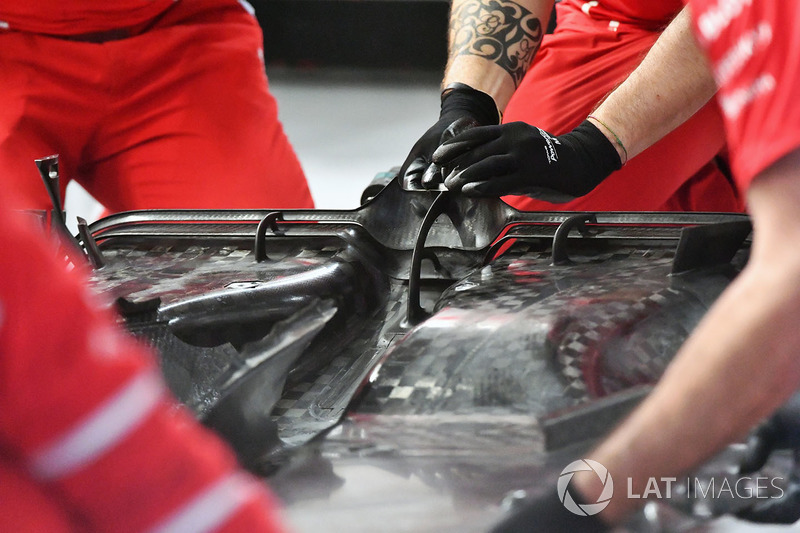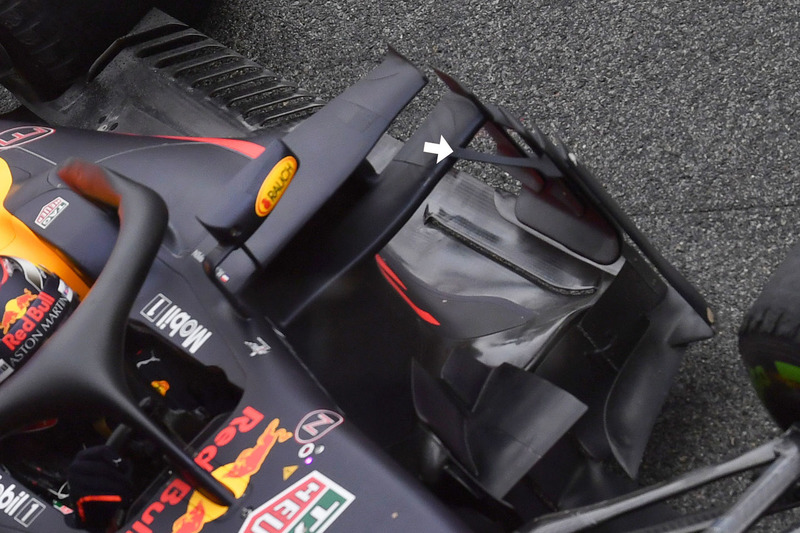Analysis: Top F1 teams' tech secrets on show in Barcelona
Formula 1 teams can pick and choose what they want to show off during their car launches, but actual track action offers no such luxury. Matt Somerfield and Giorgio Piola look at the tech solutions that broke cover in Barcelona.

Photo by: Andrew Hone / Motorsport Images
Giorgio Piola's F1 technical analysis
Giorgio Piola is the preeminent Formula 1 technical journalist. View our full selection of Giorgio's technical illustrative content
Formula 1 car launches offer us an insight into the core shape and design intention of each team, but they very rarely tell us the full story of what teams have planned for the season ahead.
In fact, it looks like a few outfits deliberately played around in doctoring some of their launch images to put the media – and rival teams – off the scent of their most innovative solutions.
But at some point teams have to run these key parts on the cars – and testing at Barcelona this week duly revealed many of these interesting design ideas.
Here we take a look at some of the details behind the main challengers.
Mercedes
Mercedes took its time to evaluate the W09 during the first few days of the test.
But, having lost almost an entire day of testing to the weather on Wednesday, it decided to roll out a new front and rear wing, plus a new nose cape on the final day in an attempt to get a baseline ahead of next year’s running.
The front wing is an evolution of its predecessor and features a revised endplate and inner canard arrangement.
The endplate and canard have been conjoined, creating a much wider flap that completely changes the behaviour of the airflow that travels up, over and around the front tyre. This helps shape the wake created by it and lessens the aerodynamic damage it has downstream.
The cape, which the team introduced in Spain last season and subsequently tweaked in Malaysia, was also modified with a much larger curved leading edge.
At the rear of the car, the team installed a lower T-wing at the start of the test (red arrow), exploiting the small area left in the regulations that permits such appendages.
The lower-downforce, reduced-drag ‘spoon’-style rear wing used for the first few days was cast aside on Thursday as the team evaluated a new, higher downforce, rear wing which features a more conventional mainplane. This is supplemented by an extrusion in the central section.
The extrusion is roughly the same width as the simple single element winglet hung from the mounting pylon below, and likely works in harmony with it in order to extract the most performance from each other as well as the exhaust plume below.
Ferrari
The SF71H features some really nice features that set it apart from much of the field.
Its wing mirrors are not only a very original and innovative design, but also show just how prepared the team is to fly close to the sun when it comes to interpreting the regulations.
The open face of the mirror exposes a guide vane that's connected to the rear of the mirror glass.
This not only allows the airflow another pathway, but gives it a purpose - reducing the turbulence created, and feeding the upper sidepod inlet while improving flow over the entire surface of the sidepod downstream.
Other teams will now almost certainly be looking on with interest and evaluating the design of the mirrors, to see if any benefits can be found by adopting such as a design themselves.
While Ferrari is the only team with such a sidepod inlet that can be helped with this design, the concept could be used by others to help reduce airflow resistance in this area of the car.
Another interesting novelty, this time at the rear of the SF71H, is the crash structure enclosure (white arrow), which creates a sort of tunnel either side of it in the coke bottle region.
It’s unclear at this stage whether these outlets, which terminate inline with the upper cooling outlets, are an expansion of the cooling requirement of the SF71H or whether they have further aerodynamic ramifications.
When not installed, the enclosure reveals that the floor features a concave shape, following the external boat tail shaping and allows access to the starter motor (white arrow, below).
It’s likely the designers have found that airflow migrating around the sidepod into the coke bottle region was adversely affected by the sudden transition into this floor well and have sought a way to improve performance.
Red Bull
During day four of the test, Red Bull opted to regress to its earlier specification wing from 2017 (inset), before returning to a specification in line with what it finished last season with.
As you can see, the two wings have different characteristics, with a wider outboard section to work the airflow across the front of the tyre’s face (yellow highlight). There is also a different endplate canard (circled) and, most importantly, a very different flap orientation.
The newer configuration’s tips curl over in a more conventional fashion (blue arrows), whilst the lowest flap (red arrow) meets the connecting point with the neutral section.
The latter of these changes has an impact on the ferocity and shape of the Y250 vortex that’s shed from this region, and marked a distinct change in philosophy at the tail end of the season, making it an interesting decision to do back-to-back tests and correlation work with the two configurations.
Not for the first time, the team has run without an aerodynamic surface during testing in order to put mileage on the board. Think back to 2015 when it ran the Camo Bull without a front wing (after Daniil Kvyat’s off) as it didn’t have a spare, until one was shipped out.
The team ran the RB14 without the sidepod deflectors extensively throughout the opening few days of the test, amid suggestions that the succession of panels held by supports at either end may not be strong enough.
A revised deflector could be found on the RB14 during the last day of the test, which featured an additional support spar (white arrow).
Be part of Motorsport community
Join the conversationShare Or Save This Story
Subscribe and access Motorsport.com with your ad-blocker.
From Formula 1 to MotoGP we report straight from the paddock because we love our sport, just like you. In order to keep delivering our expert journalism, our website uses advertising. Still, we want to give you the opportunity to enjoy an ad-free and tracker-free website and to continue using your adblocker.






























Top Comments